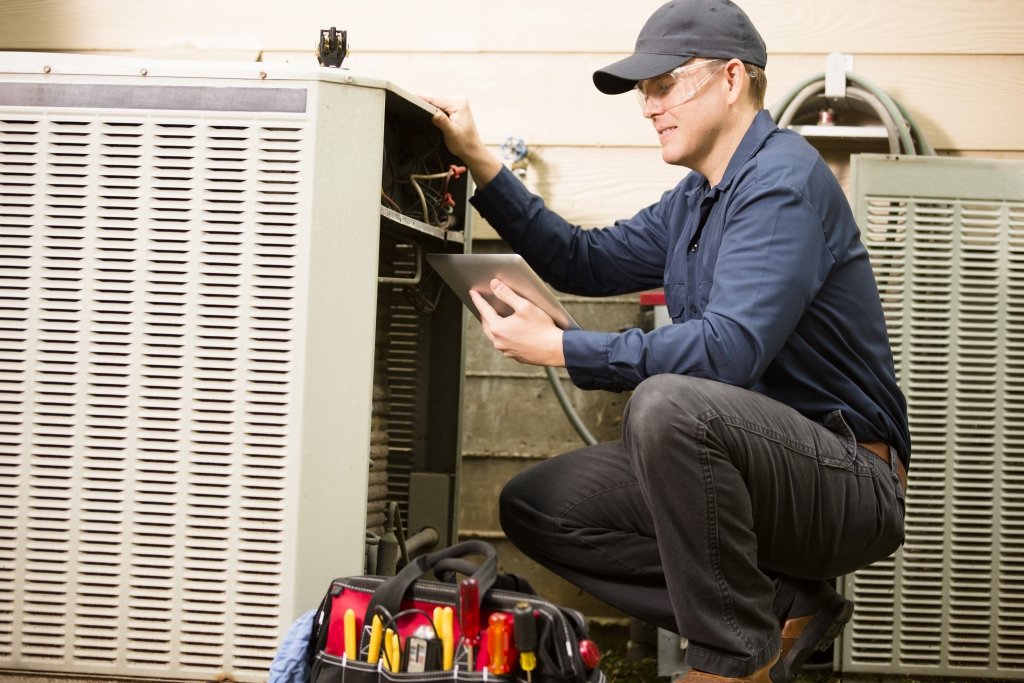
While temps are high, it’s good to look for ways to bring energy usage down. Taking a few steps during the summer months can help save money all year.
Start by taking a quick assessment of your home or apartment. Some adjustments are quick fixes, like simply turning off lights when you leave a room. Other adjustments take time, like planting trees to create shade. But each step you take could save money in the long run.
Let your thermostat be the vigilant keeper of your home’s air-conditioned temp. Program it to adjust for the hours you’re normally away from home and when you’re sleeping. One note about programmable thermostats: you need to devote time to programming for them to be beneficial, and you will need to reprogram them as your life and activities change. It’s worth the effort.
As with any thermostat, setting it to just one or two degrees higher than you’re used to in the summer can save quite a bit on your bills. Dress lighter while indoors and be comfortable.
Ceiling fans or oscillating floor fans can work in tandem with your air conditioning to lower the room temperature feel by approximately four degrees, so you can set your thermostat higher. Depending on your climate, you may be able to use fans to eliminate or significantly reduce AC usage.
Keep in mind that a fan is of no benefit when no one is in the room. So, remember to turn it off along with your lights when you leave a room.
Saving money can be as simple as screwing in a light bulb. It’s so simple to replace burned-out bulbs with LED light bulbs. This easy step can save you money in the long run as LEDs use far less energy, and the bulbs last much longer than incandescent bulbs. Check out this calculator to see the savings.
Also, consider installing dimmer switches to your overhead lighting. Along with setting the mood and adjusting the brightness in a room to meet your needs, dimmers help save electricity and extend the life of your LED bulbs.

It’s smart to bring in a professional to be sure your HVAC system is operating efficiently. The last thing you want is to have your AC break down during the summer. Repairs can be costly, and they can be difficult to have done in a timely manner during busy seasons.
Mark your calendar to regularly replace your air filters to ensure optimal HVAC performance and to keep your air clean.
Set your washer to cold wash and rinse to save energy and to keep colored clothes vibrant. Hang clothes to dry. Any appliance that uses heat, such as a dryer or iron, uses a lot of electricity.
Check your water heater temp. The default setting on most is 140 degrees, however, lowering it to 120 degrees can reduce water heating costs by up to 10%. If you’re going to be away from home for a few days, turn your water heater to the lowest setting to reduce energy usage.
Check for leaks around windows, doors, ductwork, even the seal on your refrigerator to be sure you aren’t letting valuable energy escape.
Updating windows and doors with new energy-saving replacements can be a good investment in your home. If your windows and sliding glass doors aren’t double- or triple-paned, it may be time to invest in better options. Fiberglass entry doors offer thermal protection and won’t warp or crack like wood, or dent like steel.
Keeping out the heat can be as simple as closing window blinds, shades, or shutters during the heat of the day. If your windows have no covering, adding simple blinds or shades can be an affordable option.
No need to add heat to the kitchen. Try to avoid oven or heat-producing kitchen appliances during hot weather. Opt for meals made in the microwave or cook outside on a grill.
Change your refrigerator/freezer from its default settings to 38 degrees for the fridge and 5 degrees for the freezer. Your food will stay fresh, but your fridge and freezer won’t need to use as much energy to maintain those temperatures.
Look for Energy Star appliances. Some products can pay you back hundreds of dollars in energy savings. You can also save more by looking for rebates and discounts. If you buy a new refrigerator, you may be tempted to keep the old one in a garage or basement to store extra food during busy family times. The cost of running an older refrigerator when not in use doesn’t make energy sense. It may be better to keep a large cooler on hand to hold food overflow temporarily.
Check with your utility provider about a home energy audit. Most will provide these for free, and they can be helpful in identifying additional ways to reduce your energy usage. Some utility providers offer cheaper rates during certain times of the day. Energy-intensive chores such as doing laundry can be 5% to 25% less expensive during off-peak times.
The Arbor Day Foundation estimates that homeowners can save up to 20% a year on energy bills by planting trees around homes. Deciduous trees, that drop their leaves in the fall, allow shade in the summer and warmth from the sun in the winter.
The information and materials provided on this website are intended for informational purposes only, and should not be treated an offer or solicitation of credit or any other product or service of Regional Finance or any other company. This website may contain links to websites controlled or offered by third parties. We have not reviewed all of the third party sites linked to this website and are not responsible for the content, products, privacy policy, security, or practices of any linked third party website. The inclusion of any third party link does not imply any endorsement by Regional Finance of the linked third party, its website, or its product or services. Use of any third party website is at your own risk.
You can prequalify for your personal loan online in just minutes by clicking prequalify now. Or, if you prefer, call or stop by your local branch to get the process started. Our loan specialists can answer any questions you may have such as what a personal loan is, understanding personal loan interest rates, and how to qualify for a personal loan. We’ll help you fill out an application for the type of loan that fits your needs.